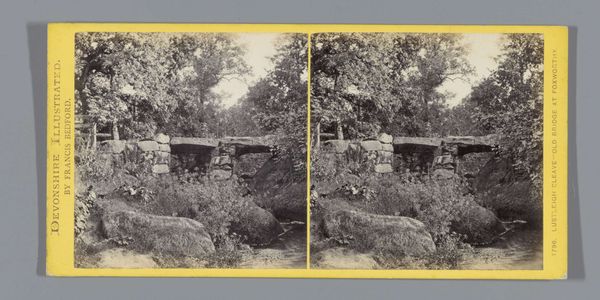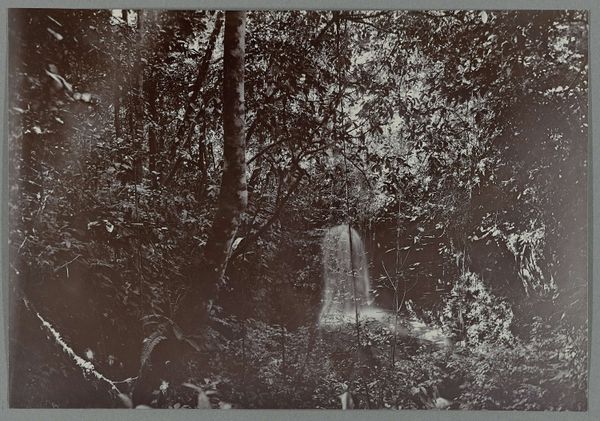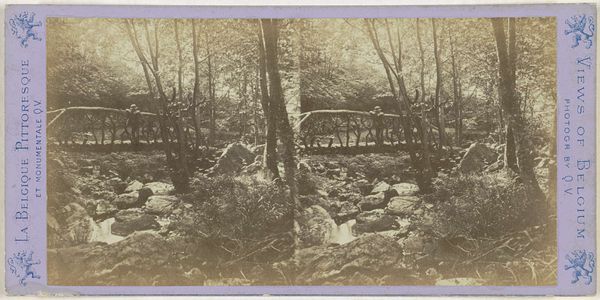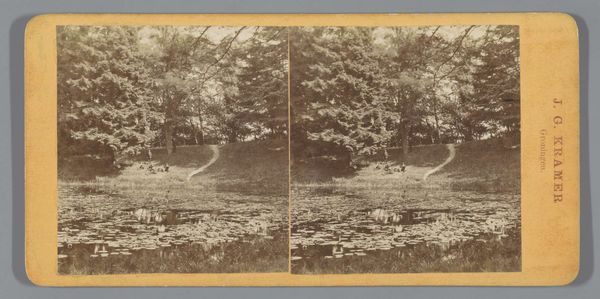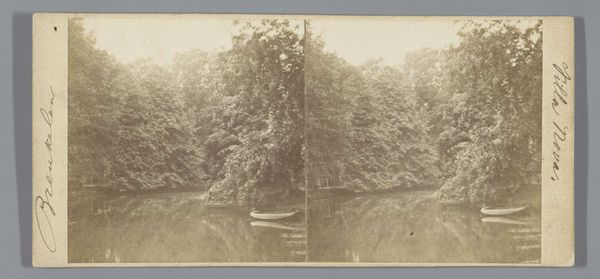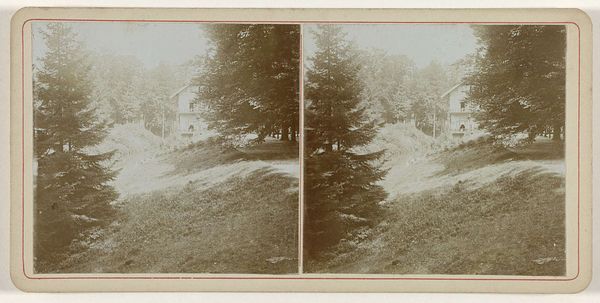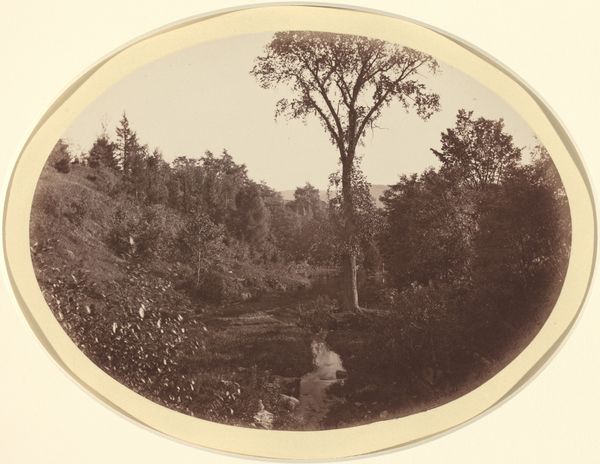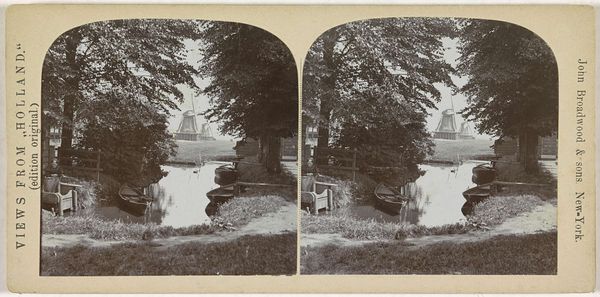
Dimensions: 8.1 × 7.5 cm (each image); 8.6 × 17.7 cm (card)
Copyright: Public Domain
Curator: This is an untitled work, often referred to as "Schweizerlat, St. Goarshausen", a gelatin-silver print created around the 1860s. The landscape scene presents a wooded area with a small bridge over a flowing stream. Editor: It has a remarkably still and contemplative air; the way the water is captured, almost frozen in time, yet conveying such motion. And there's that bridge, subtly inviting us into the depth of the forest. Curator: Exactly. The technique behind this photograph is also quite important. Gelatin-silver prints at this time were rapidly becoming the standard, influencing how photographic imagery was produced and consumed widely. These were readily available prints that gave access to imagery previously unattainable for many. Editor: Good point, making this scene, usually only enjoyed by a select few, accessible to a broader audience through print consumption. This imagery becomes popularized and thus can also represent changing perspectives about nature within society, maybe shifting towards more appreciation or conservation during industrial expansion. Curator: Definitely, considering this coincides with the early rise of tourism, the mass production and consumption of images like this provided material documentation of ideal picturesque destinations. Editor: It is worth mentioning how the photographic process itself may have helped shape Romanticism, focusing not just on majestic grandeur but allowing for intimate moments to be reproduced with perceived realism. Curator: Precisely, although this particular piece isn't by a famous name, its anonymity makes it all the more representative. These vernacular images demonstrate shifts in access to production and consumption as more artists were picking up photography and entering the marketplace, broadening social connections and challenging previous visual and material standards. Editor: Thinking about its materiality, the gelatin-silver printing process really does emphasize how integral the photographic print became to creating specific styles. Without mass availability and standardization of such media and means, artistic development of landscape may have differed, really driving and cementing popular aesthetics. Curator: Considering all the elements, from the artistic style and processes to the popular appeal this vista has, seeing it through its time, in this way, adds extra depth, for sure. Editor: It's quite fascinating seeing how technological advances in accessible, reproducible imagery helped define cultural and societal connections through imagery.
Comments
No comments
Be the first to comment and join the conversation on the ultimate creative platform.
